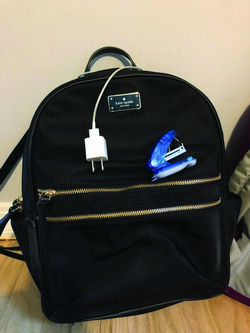With the astounding technological advances over the past couple of decades, more students and professors are utilizing technology in the classroom than ever before, especially during the pandemic when schools relied on technology to function.
Pens and paper have become an idea of the past for many students, replaced by the swift efficiency of a laptop or tablet. Although many students favor their tech-savvy study methods, there has been a rising debate over whether these devices are causing more harm than good in the classroom.
It can be extremely difficult for students to pay attention during class due to the constant stress of exams, due dates, and their personal lives that can easily distract from the learning process. The use of technological devices in the classroom can add to this distraction.
Instead of taking notes, students can get pulled into the world of social media and online shopping or find themselves texting their friends. Having their devices in front of them with direct access to the internet can be very tempting and draws their attention away from the task at hand.
According to the Brookings Institution, technology in the classroom can cause attention deficits and lower grades because of the distracting nature of apps and their notifications. It forces students to multitask, which can make learning more difficult. When students eliminate these distractions, it makes it easier for them to focus and retain more information from their classes.
Christina Rodriguez, a junior English student, said, “I handwrite all of my notes because writing them out helps me remember the information. The only time I take notes on my laptop is when I type outlines for papers.”
However, many students prefer taking notes on their devices. There’s a lot of note-taking options that technology provides, from quickly typing notes up on a laptop to using downloaded templates to using a stylus to handwrite notes.
Junior psychology student Ariana Reyes-Connelly added, “I prefer using my laptop or iPad to take notes. Even when I’m handwriting notes on my iPad, I’m able to easily fix any mistakes I make. I also find it very easy to organize everything and connect it to my OneDrive, so everything is in one place and I don’t lose anything.”
When used correctly, technology can be a very helpful tool that allows students to get work done while staying connected to their devices.
While students may not intend to get distracted by their phones or computers, technology is designed to keep people engaged. By sending out notifications when a user has been away from an app or program for too long, they encourage people to check their phones and see what’s happening online. It’s easy to lose track of time on these apps and programs, and many students find themselves absentmindedly scrolling when they should be paying attention to what is being taught in class.
Rodriguez elaborated, “I sometimes find myself scrolling on my phone for hours and don’t even notice how long I’ve been sitting there for.”
This often makes it hard for students to truly disconnect from technology. Even when we don’t have our devices out on the desk, the buzz from the notifications draws us in and tempts us to check out what’s happening. When we don’t have our devices on us, we’re wondering what we might be missing out on.
Although students can combat excessive technology usage by turning off their phones or putting them on do not disturb mode, it’s difficult to not feel the urge to reach into our pockets and see what’s going on.
Susan Meyer, Specialist Professor in the Department of Art and Design, described her experience with this issue, stating, “I teach studio art, and each class is three hours long with a 15-minute break in the middle. Some students can handle being disconnected from their phones during this time frame, while others struggle with it.”
Meyer described a strategy she developed to combat these issues. “I allow my students to use their devices to listen to music on earphones during the studio session components of the class. When this first comes up, I ask them to make sure that the music is something that aids in their ability to focus. I can see that it really does help some students to work better,” Meyer said.
By utilizing this method, students are able to have some sort of access to their devices while remaining focused on the task at hand.
Although technology can very easily become a distraction for students, there are still lots of benefits to utilizing these devices in the classroom. In a world where many people have become co-dependent and overly attached to their devices, completely taking away technology from the classroom could be just as distracting as its utilization.
“Technology is a tool; it can be great and helpful when used wisely but a bit dangerous when used carelessly,” concluded Meyer.


